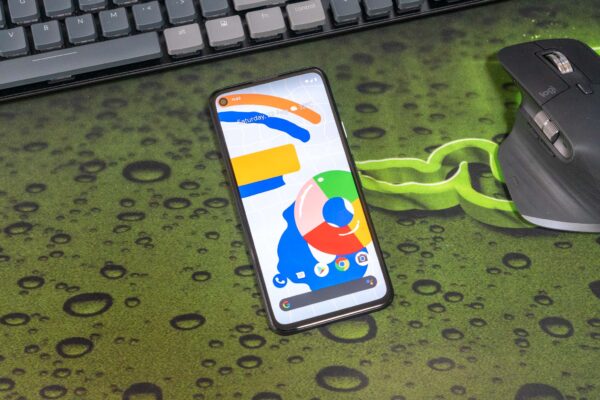
Mid-range smartphones don’t normally attract this much interest. The Google Pixel 4a is quite different, more so than the 3a that preceded it last year. It may have arrived a little late this year, but this budget-friendly face of Android promises to be an instant hit.
I shared a quick preview of the Google Pixel 4a earlier this month. I said it was an excellent mid-range smartphone that’s easy to recommend to anyone who just wanted a decent smartphone for casual daily use. The Pixel 4a’s price point also makes it particularly awesome. After using the Pixel 4a for a while, I think it may in fact even be good enough for some people who would traditionally have gotten a premium flag-ship smartphone. I’ll talk about this later.
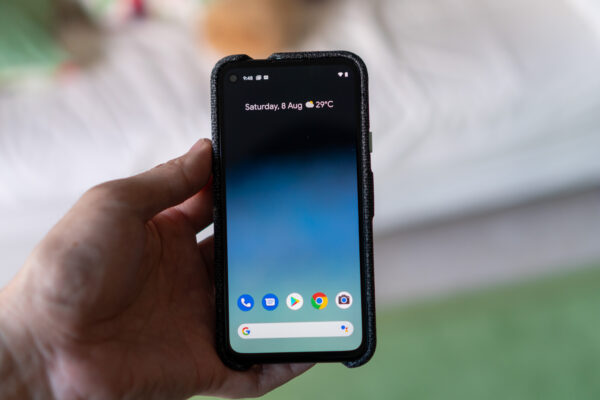
The Pixel 4a’s biggest problem is with its availability. You just can’t get your hands on it right-away due to pre-order wait, which though is a legit problem, is one of a different kind.
Unlike all earlier Pixel smartphone launches, this year’s Pixel 4a comes in only one size. I like that Google has dialed down the size, making it smaller than the smaller Pixel 3a from last year. This makes the Pixel 4a very easy to hold and use in one hand. Yet, the Pixel 4a has a larger screen than last year’s smaller Pixel 3a.
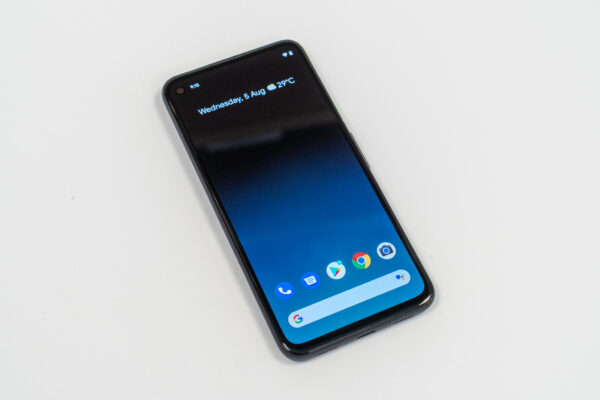
The sturdy, well-built, plastic body measures 144 x 69.4 x 8.2 mm, and weighs 143 grams. The design is quite plain, which isn’t necessarily a bad thing. The matt-finish on the back provides a good non-slip grip.
The display measures 5.81-inches diagonally, giving approximately 83.3% screen-to-body ratio. While largely plain and unremarkable when it comes to design aesthetics, the body is sturdy and well-built.
The OLED display panel has a resolution of 1080 x 2340 pixels, giving an aspect ratio of 19.5:9, and approximately 443 ppi density. The screen is covered with Corning Gorilla Glass 5.
You’ll find the power button and volume rocker at their usual locations along the right side. Like we’ve seen before in other Pixel smartphones, Google has put a playful accent colour on the Pixel 4a’s power button.
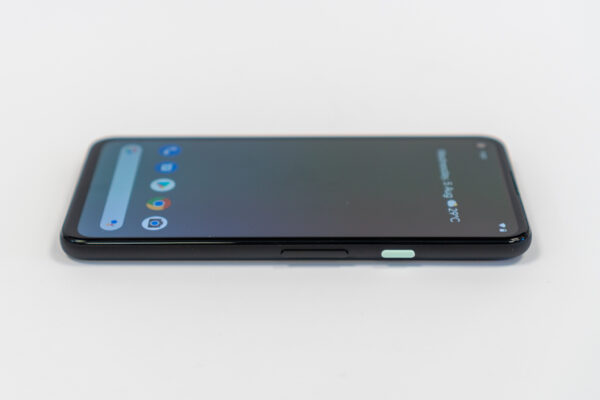
The other side features just a SIM card tray, which fits just one nano-SIM. Though there is dual-SIM support, the 2nd SIM is supported in the form of eSIM rather than a 2nd physical SIM card.
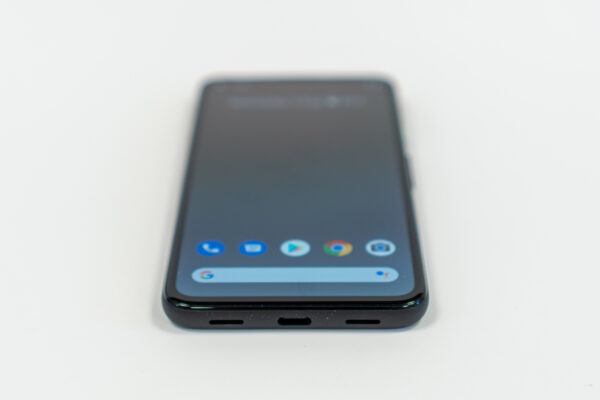
At the bottom, you’ll see the speakers, and USB Type-C port which supports 18 Watts fast charging.
There’s also a 3.5 mm headphone jack at the top of the Pixel 4a, a feature nowadays that seems to be reserved for low-end and mid-rage smartphones.
Even though the Pixel 4a only has a single rear camera, it follows the squarish rear camera housing design of the Pixel 4 and 4 XL which accommodated a second camera. The Pixel 4a’s 12.2 MP resolution sensor with f/1.7, 27 mm lens, and dual pixel PDAF and OIS support, is the same as the main camera on the Pixel 4 and 4 XL. There’s an LED flash present, though with the Pixel’s famed Night Sight capabilities, it seems almost unnecessary.
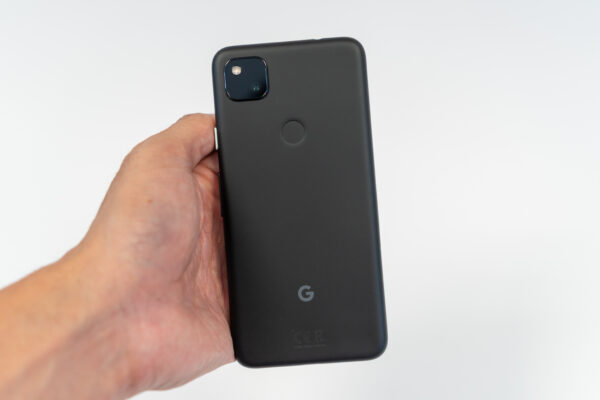
Instead of Face Unlock, the Pixel 4a brings back the veritable fingerprint sensor on the back. It works very fast, accurately, and reliably, as it always had been before the Pixel 4 devices swapped that for facial recognition.
The selfie camera on the front is now a hole-punch design, the first we’re seeing in Pixel smartphones. This is quite a common design already seen in numerous other smartphones, so I expect that most people will be fine with it. If you want a bezel-less screen, your selfie camera has got to be somewhere, and no, no pop-up cameras for me.
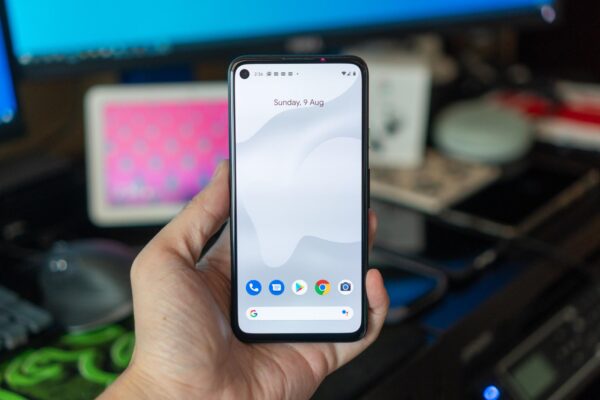
Unlike the rear camera, the selfie one on the Pixel 3a is not identical to that on the Pixel 4. You still get a 8 MP resolution sensor, but with 1.12 µm pixel size instead of 1.22 µm, and the f2.0 lens has a 24 mm focal length instead of 22 mm. It still takes great selfies, of course.
The Pixel 4a has dual-band 802.11 a/b/g/n/ac Wi-Fi. Its Bluetooth 5.0 support includes A2DP, LE, and aptX HD (HD audio). For positioning, the Pixel 4a supports GPS with A-GPS, GLONASS, GALILEO, and QZSS. It also has NFC.
What’s missing in the Pixel 4a? Fortunately, most of the missing features aren’t really that important. There’s no wireless charging, no cool TOF sensor to detect your hand waving motions, and no Active Edge, the feature that allows you to squeeze the sides of the device to activate Google Assistant. I feel it’s fine to not have extra rear cameras, because as we’ll see later, the Pixel 4a still takes really good photos.
There’s one thing I do miss though, and that is IP rating. The Pixel 3a also didn’t have any IP rating. I’m not asking to use the Pixel 4a underwater, but I would like some assurance that the device will survive some splashes. Having said that, it’s interesting to note that the SIM card tray does appear to have a gasket, so it appears Google made some effort to keep water out of the Pixel 4a.
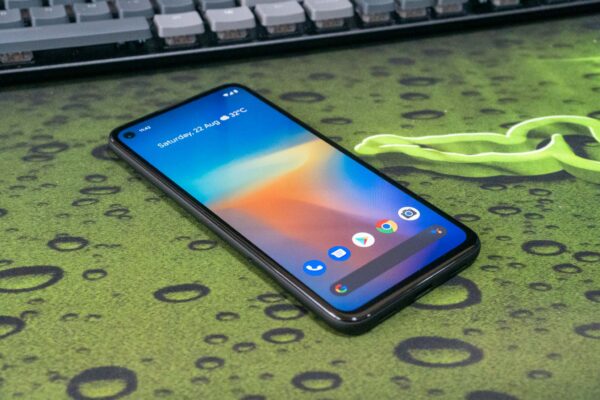
Under the hood, the Pixel 4a is powered by a Qualcomm Snapdragon 730, with 6 GB RAM and 128 GB of UFS storage. It has a 3,140 mAh capacity battery.
The Pixel 4a will is no doubt quite performant when it comes to any daily tasks you care to throw at it. The Snapdragon 730 is no slouch, even though it may not be from Qualcomm’s flagship series. In Geekbench 5 benchmarks, the Pixel 4a leads the 3a by a good margin.
| Geekbench 5 | Pixel 3a | Pixel 4a |
| Single-Core | 351 | 551 |
| Multi-Core | 1327 | 1645 |
| Compute | 636 | 1037 |
The Pixel 4a’s margin is a little smaller in PCMark for Android benchmarks, but is still clearly superior.
| PCMark | Pixel 3a | Pixel 4a |
| Work | 7105 | 8645 |
| Web Browsing | 6116 | 6771 |
In terms of battery performance, the Pixel 4a lasted 13 hours 7 minutes in PCMark for Android’s battery benchmark, and it is the best of all Pixel smartphones so far. The Pixel 3a lasted more than an hour lesser, at 11 hours 50 minutes. The Pixel 4a will keep going from early morning to late night with moderate use.
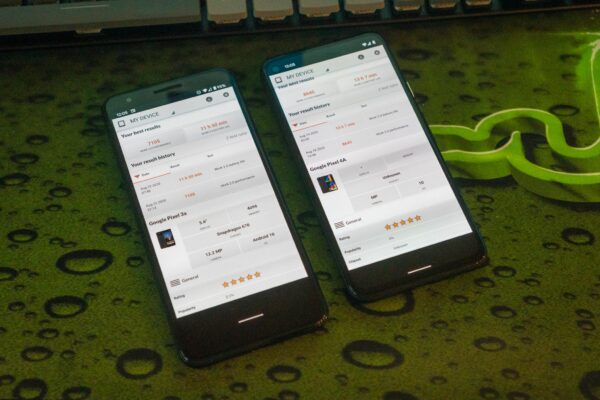
I didn’t want to compare the Pixel 4a’s performance directly with premium flagships, but I know some people will want to know where it stands in comparison. Both the Pixel 3 and Pixel 4 outperforms the Pixel 4a in both Geekbench 5 and PCMark for Android benchmark tests, a reminder that the Pixel 4a is mid-range tier.
However, for those who are hung up by benchmark numbers, I assure you that the Pixel 4a is no slouch at all. It handles messaging, social media, photography, media consumption, and web browsing all very proficiently. Just don’t expect to play demanding AAA game titles well.
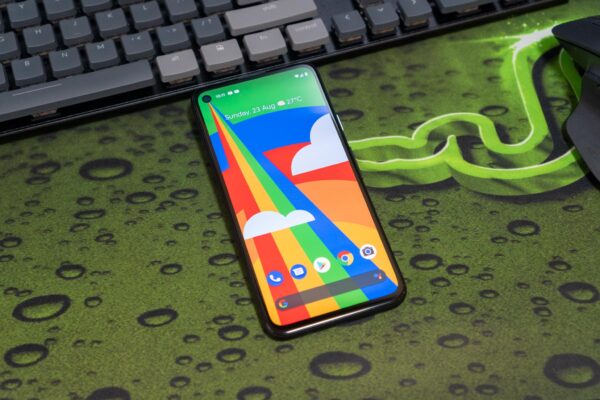
Photography has always been a stellar feature of the Pixel smartphones, and this is no different with the Pixel 4a. The Pixel 4a may not have extra cameras on the back, but Google’s use of computational photography methods helps produce great results.
I’m not going to write a photo review, because I found that Android Authority has already done an excellent job in their budget camera phone shootout a few days ago. They compared the Google Pixel 4a with the OnePlus Nord and the iPhone SE, and they declared the overall winner to be the Pixel 4a. They described the Pixel 4a as having accurate colours, having plenty of dynamic range, produces sharp images with plenty of details, and enhances images in a clean and pleasing way. Pixel 4a’s portrait mode has the most natural background separation and focus roll off.
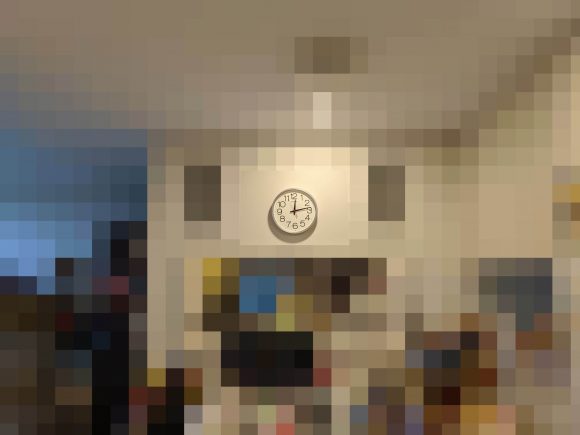
I sometimes need to zoom in to get a closer shot, so the lack of a dedicated telephoto lens is a small concern to me. Fortunately, again, Google’s use of computational photography in their Super Res Zoom feature produces phenomenal results. The photo below is a 5X zoom of the clock in the scene above, exactly as it came off the Pixel 4a (location information removed from EXIF).
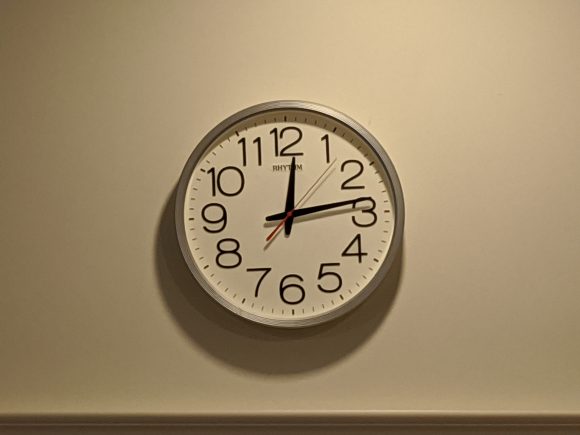
The Pixel 4a’s video capabilities top off at UHD at 30 fps on the rear camera, and 1080p at 30 fps on the selfie camera. You can also get 60 fps and 120 fps at 1080p resolution on the rear camera. Google’s computational image stabilisation is really awesome. The iPhone SE has some advantage with its UHD at 60 fps video, but otherwise, the Pixel 4a is quite comparable.
Anyone who’s used a Pixel device will find the Pixel 4a immediately familiar. The magic is mostly in the software. Most things you see in the Pixel 4 will also be the same you get in the Pixel 4a. This starts with the amazing Google Assistant, which is always listening, and will recognise your voice instantly. You can use it to control apps, send messages, check calendar schedules, interact with your smart home, and so much more. It’s truly like having a personal assistant at your fingertips.
A new feature introduced in the sound recorder app last year can automatically transcribe speech and search recordings, instead of merely recording the audio. This is mighty useful for transcribing meeting minutes. There’s also Live Caption, which automatically captions speech as they are played on the device, such as when you playback videos, podcasts, or even phone calls.
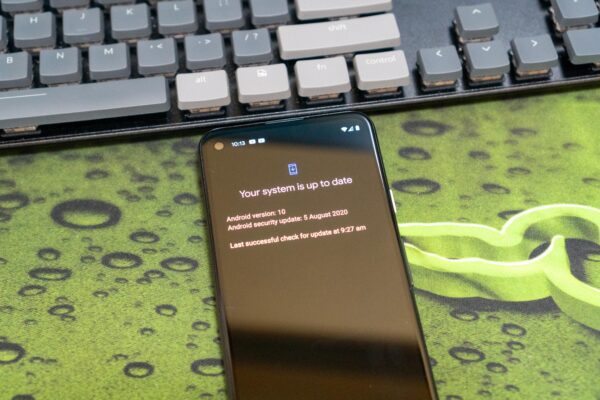
As a Pixel device, the Pixel 4a will get direct software updates from Google for three years. You will get the next couple of versions of Android, so you won’t feel like your phone has become a bit outdated after a year or two.
The Google Pixel 4a is an all round excellent device, and I do mean even beyond just the mid-range segment. I did wish it has some IP rating for water resistance. But otherwise, the Pixel 4a has and does everything that really matters, sacrificing only some features that are merely good to have. Do you need extra rear cameras when Super Res Zoom already produces decent zoomed photos? Is the convenience of wireless charging really important? I don’t even use Active Edge, and I don’t think it is really necessary even for those who do use it.
The very affordable, budget-friendly, price point also makes the Pixel 4a quite an outstanding choice for most people. For under S$500, which other phone can you find that is comparable with the Pixel 4a?
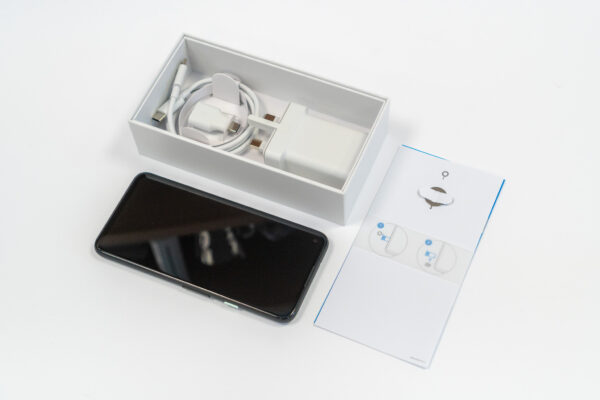
In the box, the Pixel 4a ships with an 18-Watt fast charger, Quick Switch Adapter, USB Type-C cable, and a SIM tool.
There’s only one SKU of the Pixel 4a available: the Just Black colour with 128 GB of storage. This could be a good thing for some people — fewer decisions to make.
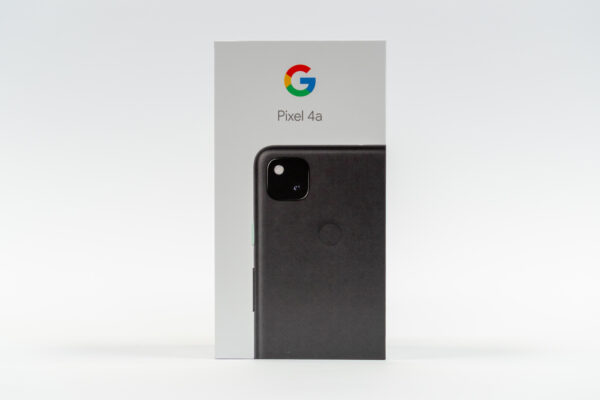
The Google Pixel 4a retails at S$499. It is available for pre-order now from the Google Store, Courts Online, and Hachi.tech. It will be available in-stores at Courts and Challenger from mid-October.
With the Pixel 4a, you’ll also get a YouTube Premium trial for 3 months, Google One for 3 months, and Google Play Pass for 3 months.
Conlusion
The Google Pixel 4a is a truly remarkable budget-friendly face of Android from Google. It’s an all-round excellent smartphone, with great performance, great camera, and great size that’s not too big. It is easy to recommend to anyone, possibly even those who would ordinarily get a premium flagship smartphone.
Pros:
- Great build quality, good-sized body
- Excellent camera
- Great performance and battery
- Big screen
Cons:
- No IP rating (water resistance)
View Comment Policy